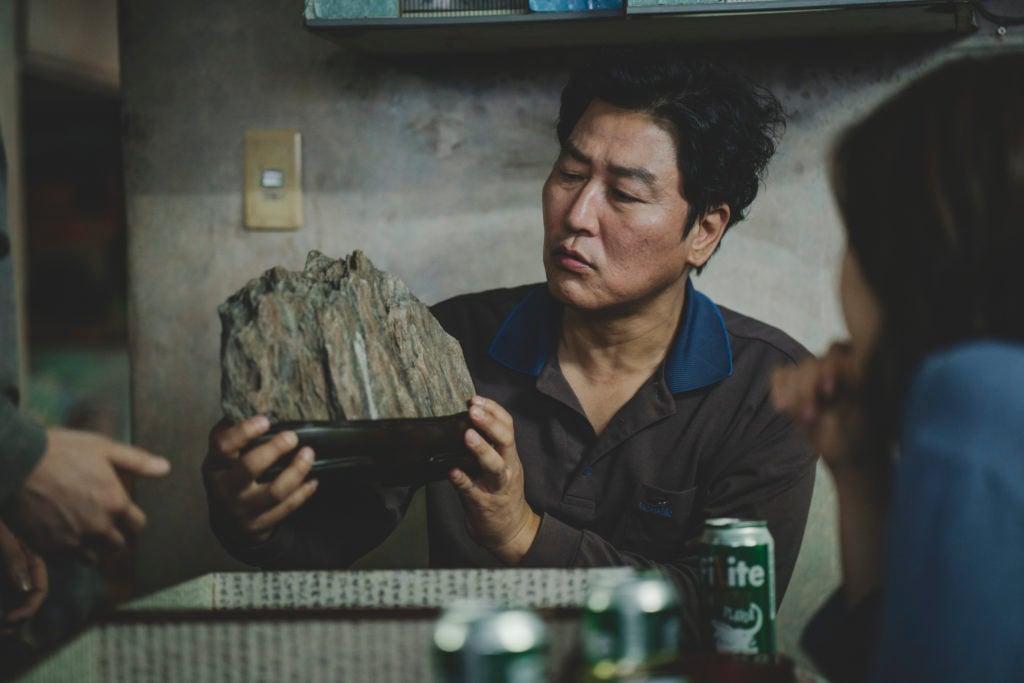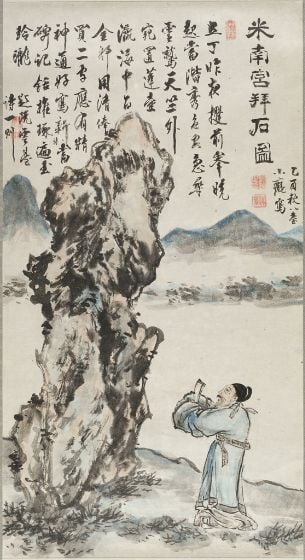Interpreting the Natural: Contemporary Visions of Scholars’ Rocks will feature artwork by ten contemporary artists who have cultural ties to China, Korea, Japan, Argentina and the USA. Informed by each artist’s passion for ancient scholars’ rocks or viewing stones, the exhibition will include ceramic forms by Laura Cannamela, wood carvings by Andy Moerlein, wax works by Laura Moriarty, concrete castings by Chris Frost, mixed media sculptures by Susan Meyer, drawings by JooLee Kang, paintings by Mark Cooper, assemblages and textiles by Woomin Kim, digital works by Furen Dai and painted stones by Elisa Pritzker. This exhibition is curated by Donna Dodson.
Recent artwork by each artist will be shown in dialogue with a few authentic stones from the Thomas Elias and Hiromi Nakaoji collection and the collection of Kemin Hu. This contrast of traditional scholars’ rocks with contemporary interpretations will create a dynamic that encourages reflection on our enduring relationship with nature. As we confront the current pandemic, and respond to the natural imbalance challenging our global society, we seek contemporary art that is able make sense of the current moment.
Stone collecting is a universal human pastime. Throughout Asia, scholars have cultivated distinct traditions: in Korea, Suseok; in Japan, Suiseki; in China, Gongshi. According to Dr. Kyunghee Pyun, an art history professor and scholar, historically, the practice of collecting and appreciating oddly shaped rocks developed from scholarly walks alone in nature. Particularly nuanced stones were appreciated as mementos and displayed reverently. The most prized “bones of the earth” were created by water or wind carving away the geological structure until only the essence is left behind. These unique stones were understood by Daoist practitioners as icons of harmony with nature. As the stones were passed from generation to generation, they signified an authentic connection to the landscape and an aesthetic reminder of that spiritual connection.
An appreciation of these stones came to represent cultural value for Chinese, Korean and Japanese collectors. With new affluence came increased demand for such ancestral heritage. Merchants would often find or carve natural stones and sell them in the marketplace. Commercial availability enhanced their popularity. With the rise of new wealth in Korea and China in the past 50 years, scholars’ rocks have become more sought after. They signify a connection to the ancient past, and they express the collector’s prosperity and hopes for the future.
Today, scholars’ rocks continue to resonate with viewers. They present a spiritual medium between modern consumerism and a transcendental one-ness with nature. Similarly, the Hudson River School of painting envisioned the grand landscape that dwarfed the American pioneer in response to the industrialization of the early United States. The surge of interest in scholars’ rocks or viewing stones in the art world, and in pop culture, such as in the movie Parasite, can be understood as a response to things being out of balance with nature, the environment, and society.
The artists in this
show are all responding to this moment, where a reverence for rocks, and nature,
is needed, now more than ever. Laura Cannamela’s ceramic sculptures explore the
relationship of form and color that focus the viewer on her intimate scale. Andy Moerlein’s woodcarvings are highly
manipulated. He explores the intersection of accident, intervention and the
natural grain patterns. To be in conversation with the landscape, Laura
Moriarty pushes painting into the third dimension using wax and pigments. Movement defines Chris Frost’s approach to making cast concrete sculptures in response to the geology of the ancient stones. Susan Meyer’s use of scale and unexpected materials defines the irreverent aesthetic of her mixed media sculptures. JooLee Kang’s ballpoint pen drawings bring to life the visions she breathes into the viewing stones. Mark Cooper’s painted constructions take a maximalist approach to this minimalist tradition. Woomin Kim uses textiles and mixed media sculptures to illustrate natural mineralogical structures and
interrogate the geological integrity of contemporary life. Furen Dai’s digital
drawings explore the conceptual history of the appreciation and commodification
of the ancient stones. Elisa Pritzker’s magic stones use indigenous patterns to
evoke a meditation on the genocide of the Selknam people of Patagonia.















